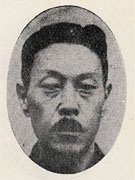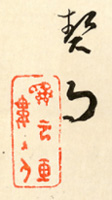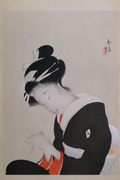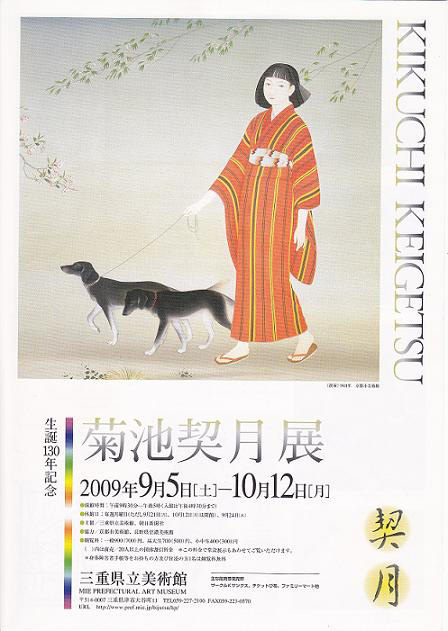Prints in Collection
Biographical Data
Biography
 | Kikuchi Keigetsu 菊池契月(1879-1955) Source: Artists of World War II, Barbara McCloskey, Greenwood Press, 2005
In 1910, Keigetsu began to work as Kikuchi Hōbun’s teaching assistant at the |
From 1918 onwards, Keigetsu regularly served as a judge of Bunten and Teiten exhibits, thus becoming a fixture of the gadan, or art establishment. In 1922 and 1923, Keigetsu traveled in Europe, where he was attracted not to the contemporary art scene, but rather to Europe’s fine collections of Renaissance painting and ancient Egyptian sculpture. His travels inspired him to pursue further research into Japan’s past artistic traditions.
After the reform of the Teiten in 1935-1936 and the institution of the Shin-Bunten in 1937, Keigetsu began to distance himself from the official art world. His work continued to appear in private art exhibitions, however, and addressed themes appropriate to the country’s nationalist sentiment. Several of his works, including Welcoming the Imperial Carriage from 1943, depict Japan’s military heroes of the past as models for current patriotic behavior.
In the postwar years, Keigetsu’s nihonga art fell out of favor among a Japanese public who now saw such works as contributing to Japan’s disastrous nationalist fervor in World War II.1 Kikuchi Keigetsu died in 1955.
1 Yet, a year after his death the Museum of Modern Art Tokyo held a retrospective exhibition of his work.
Recent Exhibition
Source: Mie Prefectural Art Museum website http://www.pref.mie.jp/bijutsu/hp/English/Exhibitions/E_Keigetsu.htmMie Prefectural Art Museum -KIKUCHI Keigetsu. the 130th Anniversary of his Birth
(5 September to 12 October 2009)
Keigetsu was born at the present Nakano city of the Nagano prefecture, and there learned southern-style painting from KODAMA Katei. On 1896 he went to Kyoto and became a pupil of KIKUCHI Hōbun next year. He learned authentic discipline based on Shijo school, and winning various prizes, came into public attention as a promising painter in the artists’ world of Kyoto. After traveling in Europe, he constantly produced serene and graceful works harmonizing occidental painting and Yamato-e, and established his position. On the other hand, as a teacher he brought up many artists such as UDA Tekison and KAJIWARA Hisako.
Commemorating 130th anniversary of his birth, this exhibition presents representative works by Keigetsu from his early days to late years, with recently-found works, copies during his stay in Europe and sketchbooks.
Simultaneously we provide a section featuring UDA Tekison, born at Matsuzaka and one of Keigetsu’s pupils. Both painters were born at the provinces, but at Kyoto were recognized by their respectively characteristic styles. We would like you to enjoy their playing together.
A Sampling of the Artist's Signatures and Seals
 挂月 Keigetsu with unread seal |  |  Keigetsu 契月 with ?いげつ Keigetsu seal |  |  Keigetsu 契月 with unread seal ?契 |  with Keigetsu 契月 seal |  |
 |  |  |  桂 月 Kei getsu |
last revision:
10/8/2020


